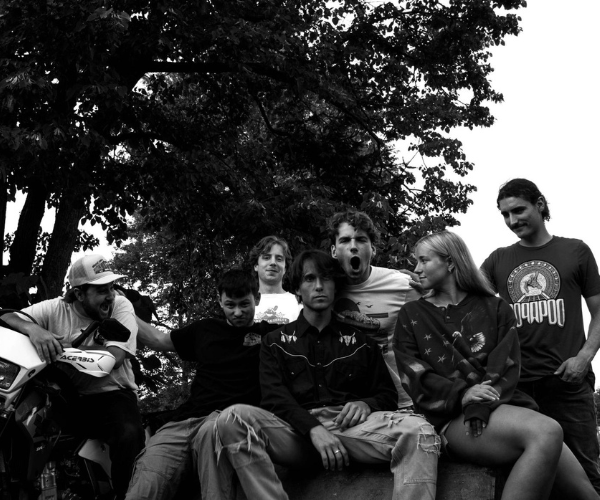Charles Herndon’s studio on Kelleys Island sits outside a red barn littered with rusty tools and wooden barrels. It’s a long way from the shiny halls of the Cleveland Museum of Natural History, where his sculptures of granite and limestone titled “Curl” and “Portal” surprise visitors more accustomed to ogling dinosaur remains.
But once you visit Herndon’s studio, his museum exhibit doesn’t seem out of place at all. He works with rocks more ancient than the bones and relics dug up by the museum’s archeologists. He takes what the glaciers left behind and makes his own mark on them.
As he works, the sculptor looks somewhat like a beekeeper in his navy blue jumpsuit and hooded mask. The hat he wears has tubes running down the back of it, supplying oxygen while keeping the hazardous dust out of his lungs. Herndon cuts the rock with a diamond saw, making a gridlike pattern on the top layer. This technique, called “bricking,” enables him to chip away at the stone without creating large cracks.
He works methodically, creating rows and columns, repeating the process over and over again. Bits and pieces of rock fly like bottle rockets. The sound of saw meeting rock is ear-piercing at first, but after a few minutes, Herndon’s quick movements with the blade seem to fuse into a melody.
“I am always opening rocks up and discovering new things,” he says. “These are some of the oldest rocks on the planet.”
Though he works mostly with rocks, sculptures of glass and wood are scattered throughout Herndon’s galleries on the island. Not everything has turned out the way he planned.
“I just keep working until something happens,” he says.
“Again and Again,” a carved crystal piece that rests in the middle of the first floor of his main gallery, turned out to be a labor of love and one of his favorites. “This is from that,” he says, pointing to a 4-inch scar on his hand.
Herndon has another workspace where the rest of the magic happens … the beach. A stone walkway overlooks the lake with a breathtaking view of water. “This is a nicer view,” he says with a laugh. Tap water pours from a hose over a rock as he smooths and shapes his creation with a piece of silicon carbide.
He will repeat this process sometimes for days or weeks depending on the type of stone he’s working with.
“It’s very hard to figure out what you are going to do while you are doing it and that degree of difficulty makes it interesting,” he says.
While walking though his galleries, where Herndon’s works are displayed, it’s clear visitors should touch them.
“They are really made for the hand,” he explains. “The hand has everything to do with making them and everything to do with appreciating them.”
As he talks about one completed piece, not even he can resist touching it again, gliding his palm along the cool stone. While his fingers gently trace the outline, he looks out at the water, wondering what it will bring him next.
Glacial Erratica: Art of Charles Herndon is on display at the Cleveland Museum of Natural History now through March 5. His galleries are located at 114 and 110 Laylin Lane on Kelleys Island. For more information, visit www.charlesherndon.com.



